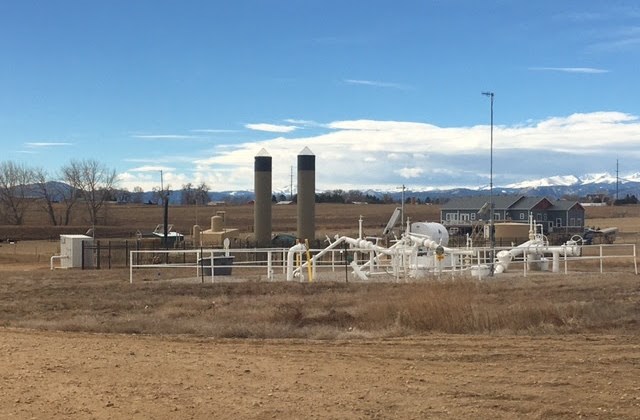Cub Creek Energy’s Knight oil and gas operation north of Union Reservoir is under investigation by state officials after a measurement taken last week found a level of benzene slightly above health guidelines.
There is no immediate health risk for nearby residents but the measurement indicates a need for further investigation, according to a Colorado Department Public Health and Environment news release. The probe will be conducted by the CDPHE with assistance from the Colorado Oil and Gas Conservation Commission.
The CDPHE mobile lab measured a benzene level of 9.9 parts per billion (ppb) on Dec. 11 and confirmed the results Dec. 13, according to the news release. The federal agency for Toxic Substance and Disease Registery’s short-term health based guideline is 9 ppb.
Health based guidelines are set much lower than the levels at which people would typically experience negative health impacts, the news release said.
City of Longmont officials are reviewing the CDPHE information and comparing it to data collected at the city’s air monitoring stations, including one near Union Reservoir, Jane Turner, the city’s air quality/oil and gas coordinator, said in an email.
The city has no formal role in the CDPHE investigation as the authority to enforce air quality and oil and gas regulations is the legal responsibility of state regulators, Turner said. Besides an air quality station at Union Reservoir, the city also monitors air quality near Vance Brand Airport. The city “shares the data with scientists, regulators, and the general public to aid in investigations and provide reliable information,” Turner said.
Turner points out that in its news release, the CDPHE said the elevated benzene was measured for one hour on Dec. 11, and that it “does not reflect an immediate health risk,” and that this “elevated level is the only one that has occurred during more than 400 hours of monitoring at this site so far.”
CDPHE’s mobile laboratory was parked north of Union Reservoir, outside of Longmont’s city limits in unincorporated Weld County, Turner said .CDPHE’s mobile laboratories — which are scientific instruments in a van — move around to various oil and well sites where they closely monitor air emissions for days or weeks, she said..
The city sent out an email advisory describing a separate event on Nov. 29, Turner said, in which methane levels were “significantly elevated” for 15 minutes, Turner said. The Nov. 29 methane event is not thought to be from the same source as the Dec. 11 event recorded by the CDPHE, because the November event originated east of Union Reservoir based upon the wind direction at the time, Turner said.
Cub Creek Energy has told the city that the Knight Wells are now producing oil and gas and hydraulic fracturing work was completed in mid-October, Turner said.
Air quality advisories are issued by public health agencies such as CDPHE and no advisory has been issued related to the Dec. 11 event, Turner said.
CDPHE said in its news release that people are exposed to low levels of benzene every day. “Whether the chemical will cause health impacts depends on how much is in the air and how long and how often people breathe it in,” the news release states.
Exposure to benzene at levels higher than those measured in the Dec. 11 event can cause short-term health impacts such as headaches, skin and eye irritation and respiratory issues, the news release states.
People who are experiencing serious or persistent symptoms that may be related to benzene should contact a healthcare provider.
People who have concerns about oil and gas operations or who have questions about the Dec. 11 measurement can contact the Oil and Gas Health Information and Response Program at 303-389-1687 or [email protected].



